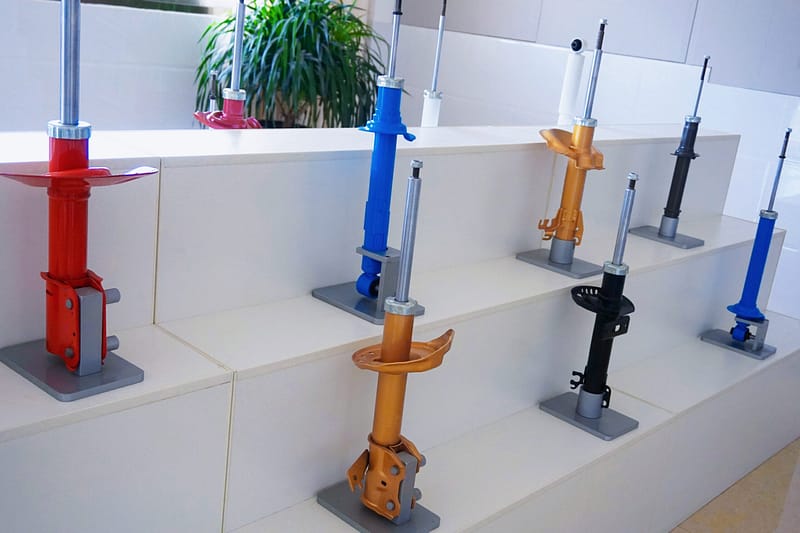When it comes to vehicle suspension systems, the gas shock absorber (gas-filled shock absorber) plays a crucial role in improving ride comfort, stability, and handling. Unlike traditional hydraulic shocks, gas shock absorbers are designed to deliver consistent damping performance even under demanding road conditions.
In this guide, we’ll cover the different types of gas shock absorbers, their key advantages, and how they compare to other shock absorber technologies.
Types of Gas Shock Absorbers
1. Nitrogen Shock Absorber (Nitrogen-Charged)
The nitrogen shock absorber is one of the most common designs. It uses pressurized nitrogen gas to stabilize the hydraulic fluid inside the damper, preventing aeration and cavitation. This ensures consistent damping performance over time. Nitrogen shock absorbers are especially suitable for sports cars and high-performance vehicles, where precise handling and stability are essential.
2. High-Pressure Gas Shock Absorber
A high-pressure gas shock absorber uses a dedicated gas chamber to maintain constant pressure on the hydraulic fluid. This prevents foaming and ensures reliable performance even under heavy loads or rough terrain. These shocks are ideal for SUVs, off-road vehicles, and commercial trucks, providing excellent durability and stability.
3. Twin-Tube Gas Shock Absorber
The twin-tube shock absorber features an inner tube filled with hydraulic oil and an outer tube containing the gas chamber. This dual design improves heat dissipation and offers balanced damping under various driving conditions. Twin-tube shocks are versatile, making them suitable for both daily driving vehicles and performance cars.
Key Benefits of Gas Shock Absorbers
✅ Enhanced Handling & Control
Gas shock absorbers maintain consistent pressure on the hydraulic oil, resulting in more stable damping. This translates to improved handling, precise cornering, and smoother ride quality.
✅ Longer Service Life
By reducing aeration and cavitation, gas shocks experience less internal wear. This makes them more durable and cost-effective, requiring fewer replacements compared to standard hydraulic shocks.
✅ Better Heat Dissipation
Heat build-up can reduce shock performance. Gas shock absorbers are designed to dissipate heat efficiently, ensuring stable performance even under extreme driving conditions.
Gas Shock Absorbers vs. Other Types
Gas Shock Absorbers vs. Hydraulic Shock Absorbers
-
Hydraulic Shocks: Rely only on hydraulic oil, prone to aeration and performance fade.
-
Gas Shocks: Combine oil with pressurized gas, delivering more consistent damping and better handling.
Gas Shock Absorbers vs. Air Shock Absorbers
-
Air Shocks: Use compressed air to adjust ride height, but are more prone to leaks and require frequent maintenance.
-
Gas Shocks: Offer better reliability and durability, making them ideal for long-term use.
Conclusion
The gas shock absorber is an essential upgrade for modern suspension systems. Compared to traditional hydraulic or air shocks, gas-filled designs provide:
-
Improved performance
-
Greater durability
-
Superior heat dissipation
Whether you drive a high-performance sports car, an off-road SUV, or an everyday commuter vehicle, investing in quality gas shock absorbers—such as nitrogen-charged, high-pressure, or twin-tube types—can significantly enhance your driving experience.
If you’re looking to upgrade your car’s suspension system or replace worn-out shocks, a gas shock absorber is one of the most effective solutions for achieving long-lasting performance and comfort.



